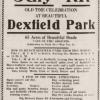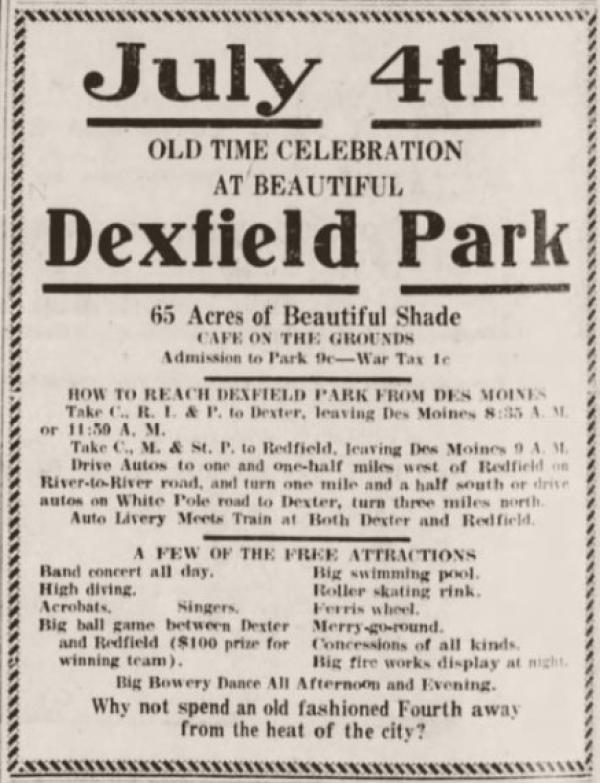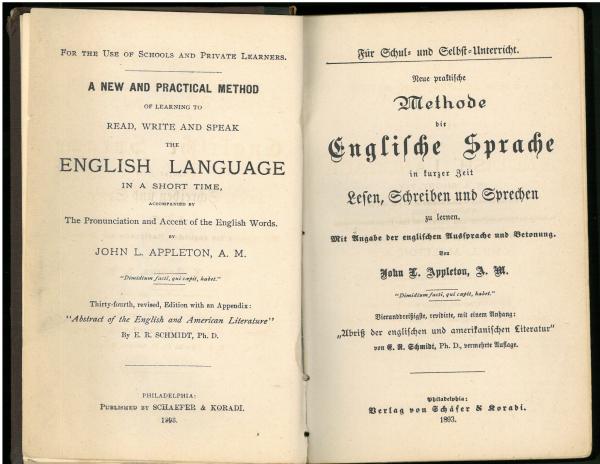US Homefront Reactions to the War
| Grade | 9th -12th Grades | Class | U.S. History | Length of Lesson | 50 Minutes |
| Lesson Title | US Homefront Reactions to the War |
| Unit Title | World War I |
| Unit Compelling Question | How did the United States entering World War I affect all facets of United States life? |
| Historical Context: 018.040.010 This textbook, which was first created in 1893, was used to teach German speakers how to read, write, and speak English. In May 1918, Iowa Governor William Harding issued the Babel Proclamation, which made it illegal for anyone to speak any language other than English in public, in schools, and in church. In the months that followed this proclamation, textbooks like this replaced German textbooks used in places such as the Amana Colonies, where most of the population spoke German. This marked one of the first steps towards standardized education in Iowa. 2018.009.014 The advertisement, in the collection of the Dexter Historical Museum, was for Dexfield Park, one of Iowa's first amusement parks. The ad encouraged residents of Des Moines to travel to the park for a Fourth of July celebration. The ad included directions to the park from Des Moines and a list of some of the park's attractions. The ad also states that the price of admission into the park was nine cents, plus an additional one cent war tax. The park, a popular attraction in the early 1900s, featured a movie screen, and carnival rides such as a Ferris wheel, merry-go-round and shooting gallery. A large dance hall provided space for music and dancing. The park also rented out canoes during the day, had a camping area and a small petting zoo. ### When WWI started in 1914, many immigrant groups to American retained strong culture ties to their European homeland. German and Irish immigration swelled newly-arrived populations and often formed closely knit urban and rural neighborhoods. Beginning around the 1890s, Southern and Eastern Europeans increased their immigration often swelling eastern cities where factories were hungry for labor. Old-line American families, often of British ancestry and predominantly Protestant, feared the loss of dominance in politics, economics, and culture that they had enjoyed. In the European conflict, immigrant groups usually sided with their native countries. The United States officially adopted a position of neutrality and genuinely hoped to avoid being drawn in to the conflict and compared European monarchies to American democracy as a root cause of the war. When the U.S. entered the war because of German submarine attacks on American shipping, the political climate shifted suddenly and radically. With American soldiers preparing to fight, all Americans were expected to support the war effort without reservations. President Woodrow Wilson appointed The Committee on Public Information which initiated a huge and effective campaign to swing public opinion. Germany and all things German were cited as ruthless and a danger to the U.S. and a campaign to ensure "100% Americanism" began. German-Americans bore the brunt of this assault. Posters depicted German acts of cruelty and sexual violence joined newspaper accounts, movies, and public speakers denouncing the German Kaiser and his supporters. However, not only Germans but all ethnic groups were pressured to renounce any loyalties to former homelands and become fully American. German language classes were discontinued in schools, German books were burned, German newspapers ceased publication, and communities and businesses with German names were renamed with patriotic ones to "prove" their loyalty the United States. Vigilante committees were created to uncover any plots against the United States and its war effort. In Iowa, Governor William Harding even went so far as to issue a proclamation that forbid the use of any language but English in public conversation. Churches could not conduct services in their native Dutch or Scandinavian languages under penalty of law. The law was never fully implemented, however, and it drew scorn from many sources as an unnecessary infringement on private freedom. The long-term impact of the anti-immigrant efforts were significant. Ethnic groups were more reluctant to take pride in their cultural heritages, and language studies were discontinued or restricted. The pressure was to retain no hint of a hyphenated citizenship, like Italian-American or Polish-American. In the following decade, Congress passed a law on immigration that favored groups that had dominated the previous century and restricted the numbers coming from Southern and Eastern Europe. |
|
| Lesson Supporting Question | |
| Lesson Overview | The lesson will be composed of a short information section, followed by group work and discussion. Students will work in groups of 4 or 5. The groups will be given a variety of primary sources pertaining to the theme of anti-German sentiment in the US and specifically in Iowa. Students will work individually to interpret their sources, then come together as a group to discuss and create a detailed statement about how life for German speakers in the US was affected by World War I . |
| Primary Sources Used |
|
| Resources Needed | Digital Projector, Google Classroom/Drive, 1 on 1 technology, desks or tables, and primary sources (listed in appendix). |
| Standard | |
| Lesson Target | Interpret primary sources with the goal of creating a discussion on the topic of anti-German sentiment during the WWI era in Iowa. |
| Lesson Themes | World War I |
|
| Formative Assessment (How will you use the formative assessments to monitor and inform instruction?) |
Before moving on to the groups writing their synthesis statements, the instructor will go around to each group and check for understanding. Any group that had members that feel as though they aren’t understanding the material can be given additional support from their group and the instructor at this time. |
| Summative Assessment (How does the lesson connect to planned summative assessment(s)?) |
The creation of the statement by the groups will showcase what they have learned individually and from each other. This statement will have guidelines that will allow the instructor to gauge how much students have learned from the primary sources and provide a summative assessment opportunity aligned with the learning goals stated above. |
| Author | Chad Timm | Created | Last Edited | ||||
| Reviewer: Dr. Chad Timm, Simpson College | |||||||
| Lesson Plan Development Notes: Dr. Chad Timm, Simpson College | |||||||




